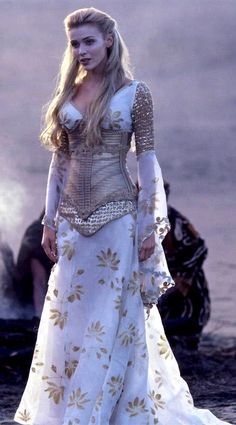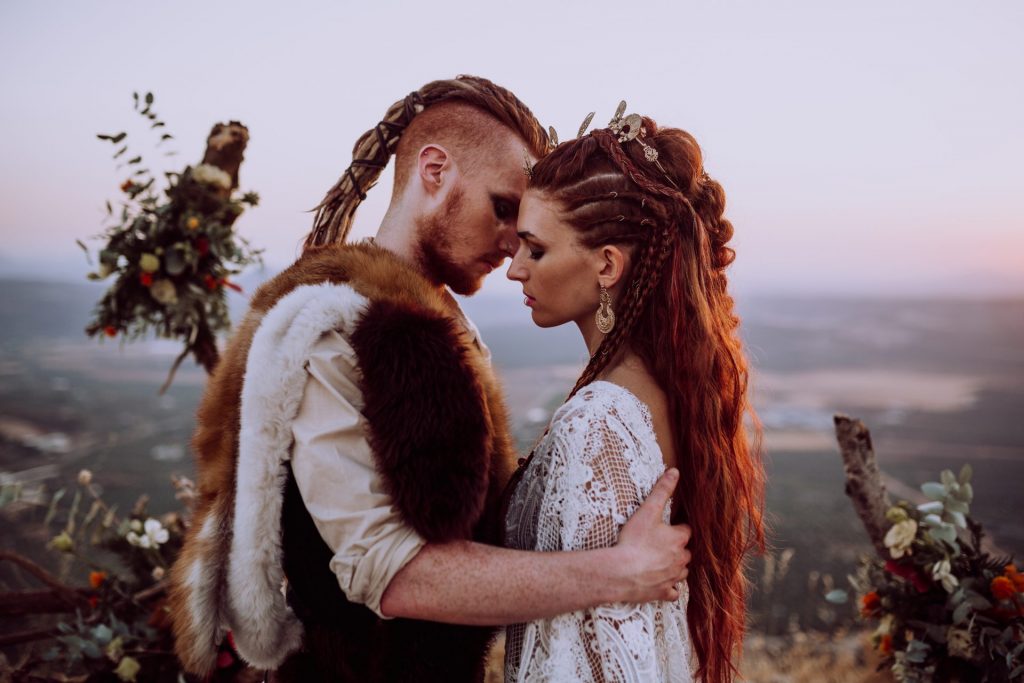When most people think of Viking weddings, they imagine a scene straight out of the movie “The Lord of the Rings.” A long, dark hall filled with fierce-looking warriors, all gathered to celebrate the marriage of their chieftain’s daughter.
But what did a real Viking wedding look like? And what was worn by the bride and groom?
The bride's dress in viking style
The Viking wedding dress was typically made from wool or linen and featured intricate embroidery and detailing. It was often brightly colored and sometimes featured fur trimming. The dress was also quite long, often reaching the ground, which helped to protect the bride against the elements.
Today, Viking wedding dresses are still popular among brides who want to add a touch of historical authenticity to their big day. Many modern versions are based on the traditional Viking style, with long skirts, intricate embroidery, and bold colors. Some even feature faux fur trimming for a truly Viking look.

The groom's outfit in viking style
The groom’s outfit in Viking style was typically quite simple. He would wear a plain woolen tunic and trousers, with a few simple decorations to show his rank and status. His skin would be darkened with a traditional Viking tanning treatment, and he would often wear a simple cloak or cape.
Today, many Viking wedding outfits for the groom include a replica of the traditional Viking tunic, along with trousers and accessories in traditional Viking style.

Differences between modern-day weddings and Viking weddings
Even though Viking weddings were a much more formal affair than modern-day weddings, there are still some similarities between the two. Both ceremonies involve exchange of marriage vows, and both are occasions for family and friends to come together and celebrate.
However, there are also some key differences between Viking weddings and modern-day weddings. For one, Viking weddings were much more elaborate and formal than today’s weddings. There was a strict hierarchy among the guests, with the chieftain and his family at the top, followed by the other warriors and clan members. Guests were expected to dress in their finest clothes and observe proper etiquette.
Modern-day weddings are much more relaxed and informal, with no set dress code or hierarchy. Guests can come dressed however they like, and there is more emphasis on fun and celebration than on formality. Another key difference is that Viking weddings were traditionally held outdoors, while modern-day weddings are usually held in a reception hall or other indoor venue.
Fun facts about Viking weddings
Viking weddings were a very important occasion, and the bride and groom were expected to behave with the utmost decorum and dignity. Here are some fun facts about Viking weddings:
– The bride’s dress was often very elaborate, featuring intricate embroidery and detailing.
– The groom’s outfit was typically quite simple, consisting of a plain woolen tunic and trousers.
– Viking weddings were usually held outdoors, in a location that was important to the clan.
– The guests at a Viking wedding were arranged in a strict hierarchy, with the chieftain and his family at the top.
– Viking weddings were much more formal than modern-day weddings, with no focus on fun and celebration.
